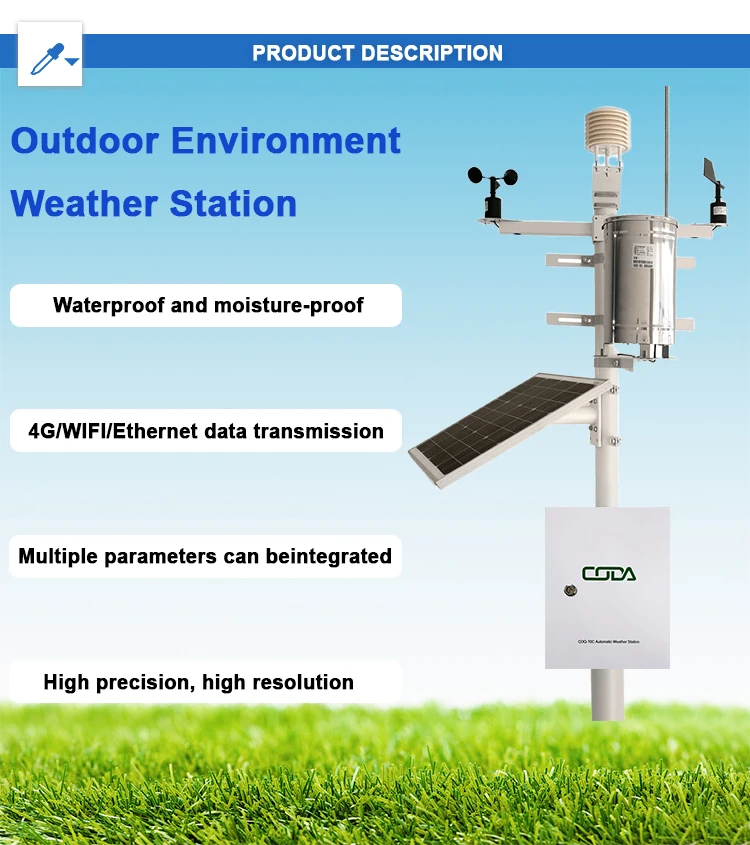
,文章长度在1000字左右
html
Advantages and Disadvantages of Automatic Weather Stations
Automatic Weather Stations (AWS) have revolutionized the way meteorological data is collected and analyzed. These systems are widely used in agriculture, aviation, disaster management, and climate research. While they offer numerous benefits, they also come with certain limitations. This article explores the advantages and disadvantages of automatic weather stations to provide a balanced perspective.
Advantages of Automatic Weather Stations
1. Continuous and Real-Time Data Collection
One of the most significant advantages of AWS is their ability to collect weather data continuously and in real-time. Unlike manual weather stations, which require human intervention, AWS can operate 24/7 without interruptions. This ensures a steady stream of accurate and up-to-date information, which is crucial for weather forecasting and emergency response.
2. High Accuracy and Precision
Automatic weather stations are equipped with advanced sensors that measure various meteorological parameters such as temperature, humidity, wind speed, and precipitation with high accuracy. These sensors are calibrated to minimize errors, providing reliable data for research and decision-making.
3. Reduced Human Error
Since AWS operate autonomously, they eliminate the risk of human error associated with manual data collection. This is particularly important in remote or hazardous locations where human presence may be limited or dangerous.
4. Cost-Effective in the Long Run
While the initial setup cost of an AWS can be high, the long-term savings are substantial. Automated systems reduce the need for manual labor, maintenance, and frequent calibrations, making them a cost-effective solution for continuous weather monitoring.
5. Remote Accessibility
Many AWS are equipped with wireless communication capabilities, allowing data to be transmitted to central databases or accessed remotely via the internet. This feature is invaluable for researchers and meteorologists who need to monitor weather conditions from different locations.
Disadvantages of Automatic Weather Stations
1. High Initial Cost
The upfront cost of purchasing and installing an AWS can be prohibitive for some organizations or individuals. High-quality sensors, data loggers, and communication systems contribute to the overall expense, which may not be feasible for small-scale operations.
2. Maintenance and Calibration Requirements
Although AWS require less maintenance than manual stations, they are not entirely maintenance-free. Sensors can degrade over time due to environmental factors, and regular calibration is necessary to ensure data accuracy. Failure to maintain the system can lead to erroneous readings.
3. Vulnerability to Environmental Damage
Automatic weather stations are often exposed to harsh weather conditions, which can damage sensitive components. Extreme temperatures, heavy rainfall, or strong winds can affect the performance and longevity of the equipment.
4. Dependence on Power Supply
Most AWS rely on electricity or solar power to function. In areas with unreliable power sources, the system may fail, leading to data gaps. Battery backups can mitigate this issue but add to the overall cost and maintenance requirements.
5. Limited Flexibility in Data Collection
While AWS are excellent for standardized data collection, they may lack the flexibility to adapt to unique or unforeseen weather phenomena. Human observers can sometimes provide contextual information that automated systems cannot capture.
Conclusion
Automatic weather stations offer numerous benefits, including real-time data collection, high accuracy, and reduced human error. However, they also come with challenges such as high initial costs, maintenance requirements, and vulnerability to environmental damage. Understanding these advantages and